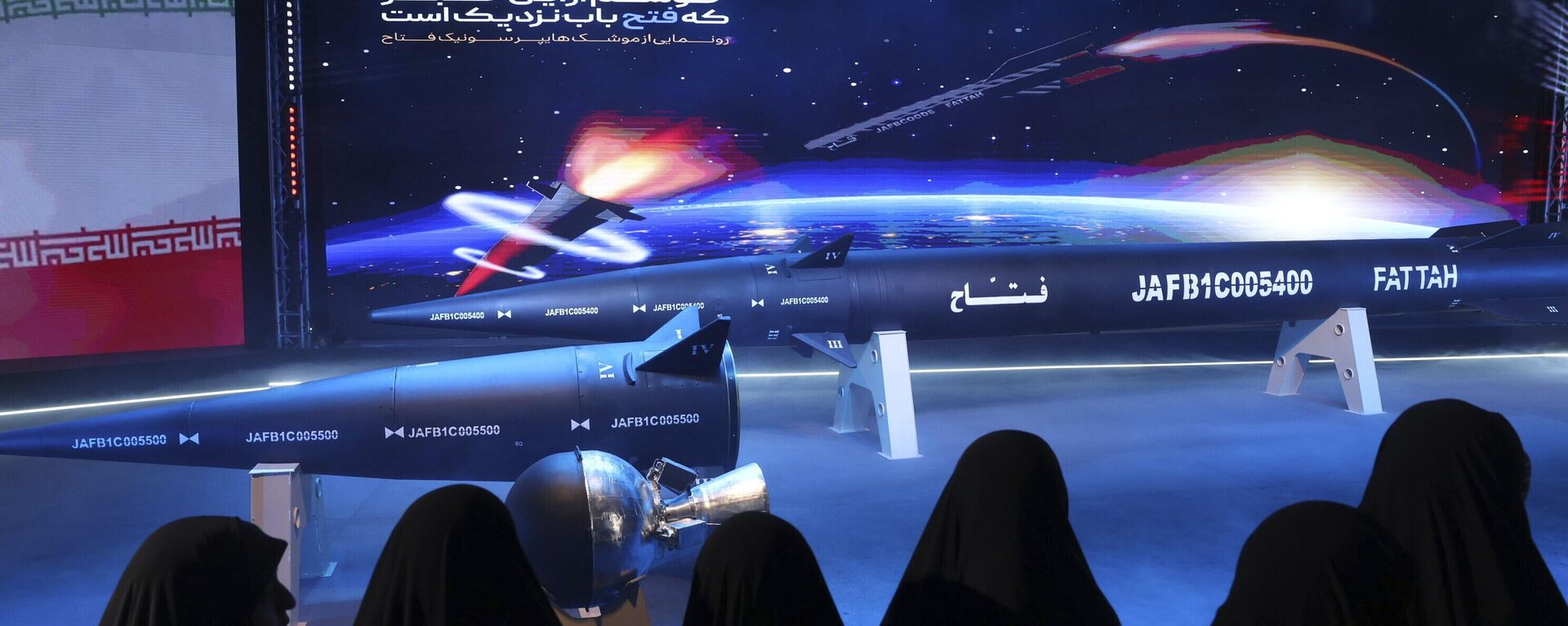https://sputnikglobe.com/20230627/europes-attempt-to-acquire-anti-hypersonic-weapon-in-three-years-unlikely-to-succeed-1111498461.html
Europe's Attempt to Acquire Anti-Hypersonic Weapon in Three Years 'Unlikely to Succeed'
Europe's Attempt to Acquire Anti-Hypersonic Weapon in Three Years 'Unlikely to Succeed'
Sputnik International
While European missile manufacturer MBDA recently announced its intent to “lead a consortium” for developing an interceptor capable of defending against “hypersonic threats” called the Aquila project, it remains unclear exactly how fruitful this venture is going to be.
2023-06-27T15:20+0000
2023-06-27T15:20+0000
2023-06-27T15:20+0000
world
europe
mbda
hypersonic missiles
defense
development
https://cdn1.img.sputnikglobe.com/img/07e7/02/14/1107605552_0:129:3185:1921_1920x0_80_0_0_f3d5f0091890e9b52102339998c5aed2.jpg
Military expert with independent Russian military affairs think tank Center for Military-Political Journalism, Boris Rozhin, told Sputnik that it seems unlikely that some MBDA prototype interceptor would be adopted in the next three years or so.As Rozhin pointed out, even the United States is currently experiencing serious problems with the development of an air defense system capable of dealing with hypersonic weapons, and Europe currently lags behind the US in that sphere.Rozhin noted that four countries – Russia, China, Iran and North Korea – currently have working models of hypersonic missiles, and that the United States may acquire a working hypersonic missile of their own within two or three years, but so far, no air defense system capable of effectively countering such a threat exist.However, it is hard to say at this point, i.e. during the development stage, how efficiently this funding is going to be used, he remarked.Rozhin also observed that Russia currently surpasses the US and Europe in terms of hypersonic weapons development, and while he did admit that Moscow may be working on anti-hypersonic defense systems, the expert argued that any such research would be highly classified and not advertised to the public.Meanwhile, Tiberio Graziani, chairman at Vision & Global Trends International Institute for Global Analyses, argued that the “realization” of the Aquila prototype in three years’ time “will be possible,” though the industrial production of this weapon would be a more complex affair, in no small part due to Ukraine constantly asking Europe for more armaments.At the same time, he deemed as unlikely the possibility of Western hypersonic missiles being used in the ongoing Ukrainian conflict, arguing that “the lead time is too short.”
https://sputnikglobe.com/20230606/iran-joins-hypersonic-club-with-fattah-missile--video-1110955336.html
Sputnik International
feedback@sputniknews.com
+74956456601
MIA „Rossiya Segodnya“
2023
News
en_EN
Sputnik International
feedback@sputniknews.com
+74956456601
MIA „Rossiya Segodnya“
Sputnik International
feedback@sputniknews.com
+74956456601
MIA „Rossiya Segodnya“
hypersonic weapons, hypersonic interceptor missile
hypersonic weapons, hypersonic interceptor missile
Europe's Attempt to Acquire Anti-Hypersonic Weapon in Three Years 'Unlikely to Succeed'
While European missile manufacturer MBDA recently announced its intent to “lead a consortium” for developing an interceptor capable of defending against “hypersonic threats” called the Aquila project, it remains unclear exactly how fruitful this venture is going to be.
Military expert with independent Russian military affairs think tank Center for Military-Political Journalism, Boris Rozhin, told Sputnik that it seems unlikely that some MBDA prototype interceptor would be adopted in the next three years or so.
As Rozhin pointed out, even the United States is currently experiencing serious problems with the development of an air defense system capable of
dealing with hypersonic weapons, and Europe currently lags behind the US in that sphere.
“Some additional funds will definitely be allocated, additional research and development teams will be assigned,” he pondered. “But I don’t think that Europe will be able to acquire within the next two-three years more variants of air defense system that could effectively combat modern hypersonic missiles.”
Rozhin noted that four countries – Russia, China,
Iran and North Korea – currently have working models of hypersonic missiles, and that the United States may acquire a working hypersonic missile of their own within two or three years, but so far, no air defense system capable of effectively countering such a threat exist.
“Talking about lagging behind in certain aspects is the best way to increase defense spending,” Rozhin added. “That is, we say that we are lagging behind [our rivals] and so we need more money to develop something in order not to lag behind.”
However, it is hard to say at this point, i.e. during the development stage, how efficiently this funding is going to be used, he remarked.
Rozhin also observed that Russia currently surpasses the US and Europe in terms of hypersonic weapons development, and while he did admit that Moscow may be working on anti-hypersonic defense systems, the expert argued that any such research would be highly classified and not advertised to the public.
Meanwhile, Tiberio Graziani, chairman at Vision & Global Trends International Institute for Global Analyses, argued that the “realization” of the Aquila prototype in three years’ time “will be possible,” though the industrial production of this weapon would be a more complex affair, in no small part due to Ukraine constantly asking Europe for more armaments.
“The western war industrial sector as a whole is currently suffering from a sort of supply chain tension, as has been admitted, among others, by the CEO of MBDA, Eric Berager,” Graziani remarked.
At the same time, he deemed as unlikely the possibility of Western hypersonic missiles being used in the ongoing Ukrainian conflict, arguing that “the lead time is too short.”



